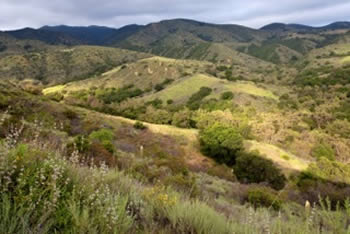EHL was quoted in the media on illegal grading on iconic Rancho Guejito,potential conservation planning in San Bernardino County, multiplespecies plan management, and proposed reductions in community input andenvironmental protection in San Diego County.

The
Voice of San Diego covered the difficult history of efforts to find funds to manage San Diego’s Multiple Species Conservation Plan (“
Years of Broken Promises on Protected Land,” March 7, 2012). EHL has spearheaded efforts to identify funds through the San Diego Association of Governments (SANDAG) sales tax ballot measure. EHL’s Michael Beck was quoted on the problems facing a new ballot measure, including the difficulty of tax measures during an economic downturn. “Whatever it takes to get to that golden ring is what we're pursuing,” he says. “Waiting longer to get there is bad, but it's not terrible.” Complicating things further: Putting habitat funding alone in a ballot initiative would never pass. “Never in a million years," Beck says. A controversial suite of “red tape reduction” reforms was placed before the San Diego County Supervisors at a public hearing and reported on by the East County Magazine (“Supervisors get an earful from public and planners over proposal to ax planning groups,” March 1, 2012). Dan Silver, CEO of the Endangered Habitats League, chastised Supervisors for failing to include the conservation community on the task force. He urged Supervisors to keep the Resource Protection Ordinance as well as community planning groups, which he called “a hallmark of good government that this county is known for.”
The North County Times provided graphic coverage of potential illegal road grading on the iconic Rancho Guejito in northern San Diego County (“Road into vast ranch could ease development, draw sanctions,” February 5, 2012). Dan Silver, a close observer of Rancho Guejito and president of the Los Angeles-based Endangered Habitats League, said illegal road grading is sometimes used to create "facts on the ground" that years later are accepted as legal and pave the way for development.
Later, the North County Times covered the enforcement action taken by the County of San Diego after it determined that the massive, 2-mile long grading along Guejito Creek was indeed illegal (“County orders Rancho Guejito to restore canyon, pay fine,” March 29, 2012). “I commend the county for doing the right thing,” added Dan Silver, a prominent Los Angeles environmentalist whose Endangered Habitats League has long watched development plans at the ranch. Silver said that EHL will scrutinize the extent to which the canyon is restored.
The San Diego Union-Tribune reported on the full range of violations incurred by the Ranch owners (“Unpermitted roadwork at Rancho Guejito leads to fines and questions,” April 6, 2012).The U.S. Army Corps of Engineers, California Dept. of Fish and Game, California Regional Water Quality Control Board, and California Regional Water Quality Control Board each issued separate notices of violation for discharging fill into creeks, impairing water quality, and altering a streambed without permits. EHL provided comment: Dan Silver, executive director of The Endangered Habitats League, has been closely following Rancho Guejito ever since development plans were first mentioned. Silver said he worries the construction was an attempt to get “facts on the ground,” meaning that it might make it easier to one day get a road approved if there already was one there, even if it was built illegally. “The road is clearly in a position of something that would be needed for any future major development,” he said. “But I can’t speculate whether that was a motivation or not. He claims it was for agricultural purposes. “What’s mystifying to me is that he would proceed without permits,” since the property is being closely watched by preservationists, Silver said.
EHL participated in an important environmental visioning exercise conducted by the County of San Bernardino. As reported in the Riverside Press-Enterprise (“Regulators, regulated come together,” February 6, 2012), Dan Silver of the Endangered Habitats League said San Bernardino County has been missing out on state and federal funding for the environment because it hasn't adopted a habitat protection plan, as Riverside County did years ago.


